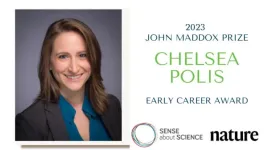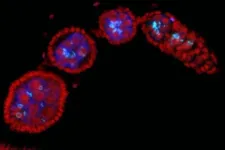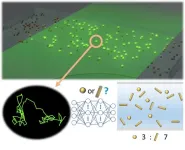Extending the annual screen by a year for people in England considered to be at low risk of diabetic eye disease (diabetic retinopathy) could risk critical treatment delays and/or sight loss, suggests a large, real world data study, published online in the British Journal of Ophthalmology.
Early treatment is vital to stave off blindness, say the researchers. A 2-yearly screen delayed hospital referral by 12 months among around half of those who developed serious diabetic eye disease, with those at either end of the age spectrum and of Black ethnicity most at risk, the findings indicate.
A review and update of the diabetic eye screening programme standards and their reporting requirements is now overdue, concludes a linked editorial.
The NHS introduced an eye screen (DESP) in 2003 for people in England with types 1 or 2 diabetes from the age of 12 onwards, with the aim of picking up diabetic eye disease—damage to the delicate network of tiny blood vessels at the back of the eye—for which early treatment is essential to stave off sight loss.
Since 2016, the UK National Screening Committee has recommended annual eye checks for those at high risk of sight loss, and 2-yearly checks for those considered to be at low risk, in light of evidence indicating that this interval is safe and cost effective amid rising demand for the service, explain the researchers.
Already in place elsewhere in the UK, it is now being implemented in England. But it’s not clear what clinical and other impacts this change might have, say the researchers. To plug this knowledge gap, they drew on one of the largest most ethnically diverse diabetic screening programmes in North East London.
They tracked the eye health of 82,782 people with diabetes but with no diabetic eye disease in either eye on two previous consecutive screens between 2012 and 2021. Over a third were of White (36%) or of South Asian (37%) ethnicities; 16% were Black.
Over 8 years, they looked at the numbers of those developing the condition, their ethnicity and age as well as the implications of potential delays in referral for treatment as a consequence of 2-yearly rather than annual eye checks.
During this period, 1788 new cases of moderate to severe (sight threatening) diabetic eye disease were picked up in people regarded as being at low risk: 103 of these had the proliferative form (PDR) —the most severe type associated with late stage damage that carries a very high and short term risk of blindness and requires urgent referral.
Men had lower rates of sight threatening diabetic eye disease than women, and those with type 1 diabetes had higher rates than people with type 2 diabetes. There was no clear pattern across levels of deprivation.
But striking ethnic differences emerged over time. Case rates were significantly higher among Black people, who were 121% more likely to develop sight threatening diabetic eye disease than White people while South Asian people were 54% more likely to do so.
Based on these figures, extending the annual eye check to 2 years would have delayed diagnosis by 12 months in more than half (1007; 56.5%) of those with sight threatening disease and in nearly half (44%; 45) of those with PDR.
The diagnostic delays stratified by ethnic group were 256/30,350 among White people, 379/29,730 among South Asian people, and 256/13,391 among Black people—equivalent to 844, 1276, and 1904 per 100,000 screened, for each ethnic group, respectively.
For PDR, numbers were much lower, but rates were still higher among Black people (90/100,000) compared with White people (46/100,000).
Progression to sight threatening diabetic eye disease was also more pronounced in the youngest (under 45) and oldest (65+) than it was in those in their mid 40s to 60s.
Diagnostic delays stratified by age were highest among the under 45s (1504 per 100,000 screened) and among those aged 65 and older (1248) compared with 1178/100,000 among 45 to 54 year olds and 987 among 55 to 64 year olds.
The researchers acknowledge various limitations to their findings, including the use of annual screening data to simulate 2-yearly screening.
But they write: “Given these sociodemographic differences, we have shown that introducing biennial as opposed to annual diabetic eye screening could worsen sight loss among certain sociodemographic groups because of delayed detection of [sight threatening diabetic retinopathy] and PDR, potentially adding to healthcare inequalities.”
And they emphasise: “The incentive of biennial screening is to release capacity in the NHS and lessen the inconvenience for [people with diabetes] at low risk of sight loss of attending eye screening appointments every year, but there is a need to address the potential to amplify ethnic and age inequalities in healthcare.”
They go on to suggest that “artificial intelligence (AI) technologies could be used to assist in maintaining the current status quo in screening frequency”. But despite their well evidenced effectiveness in reducing the human workload of grading retinal images for diabetic eye disease, automated systems, which have been used in Scotland for over a decade, aren’t currently licensed for use in the English NHS DESP.
In a linked editorial, Drs Parul Desai and Samantha De Silva of, respectively, Moorfields Eye Hospital London and the Oxford Eye Hospital and University of Oxford, comment: “Given the significant change in service delivery that has either already taken place or is imminent, and the evidence now available, a review and update of DESP standards and their reporting requirements (last undertaken in 2019), should be planned to take account of the differential impact among subgroups of the population eligible for diabetic eye screen.”
They add: “Introducing a requirement to report by age and ethnicity for selected screening standards would enable regular, prospective monitoring of changes to service delivery, so disparities do not remain unrecognised, and provide information for responsive action on any unwarranted variation….Because one size may not always fit all.”
END





